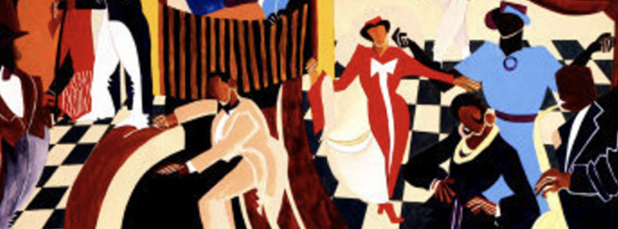
In 1926, Carter G. Woodson founded “Negro History Week” to highlight African American life and history which had been ignored, left out of American history textbooks. Woodson chose the second week of February for the celebration, which contained the birthdays of Abraham Lincoln and Frederick Douglass, key figures in the emancipation of enslaved people. Later, in 1976, President Gerald Ford formally recognized February as Black History Month and assigned the theme of “Civilization: A World Achievement” to it. Forty-five years later, Black History Month continues to provide visibility of the African Diaspora’s achievements and hardships, with 2022’s theme being: Black Health and Wellness.
The LWVBAE Diversity, Equity, and Inclusion (DEI) Team this month aims to highlight Black excellence and perseverance in African-American history. The Harlem Renaissance, dating from the 1910s to the 1930s, was the “golden age” in African American culture. With approximately six million Black people fleeing the south to escape racial violence and seek economic and educational opportunities during the Great Migration, they formed communities all over and especially in Harlem in New York City. From these communities spawned new music, dance, literature, art, political thought, etc. The Harlem Renaissance gave Black artists and intellectuals from the South and the Caribbean the space to control and expand the conceptualization and portrayal of the Black experience.
Authors such as Langston Hughes and Zora Neale Hurston showcased Black protagonists. Hurston is known for her books, “Their Eyes Were Watching God” and “Mules and Men.” Louis Armstrong transformed Jazz through improvisation on the trumpet, when previous generations of performers used simple melodies. Richmond Barthé created realistic sculptures of African women and explored homosexuality in his work. The Harlem Renaissance was an explosion of creativity by and for Black minds, resulting from the hundreds of years of being oppressed and the indomitable human spirit. The Harlem Renaissance highlighted the past and present experiences of Black people. Now, it serves as a basis and example for future creators, intellectuals and artists to follow suit and examine the Black experience through different lenses.
The Museum of the African Diaspora (MoAD) reflects the expansion of Black excellence through art. Based in San Francisco and opened in 2005, its mission aims to, “celebrate Black Cultures, ignite challenging conversations, and inspire learning through the global lens of the African Diaspora.” Its current exhibitions include work from: Billie Zangewa, a Malawi-born artist who depicts roles of women through her silk tapestries; Amoako Boafo, a Ghanian artist who creates paintings that attempt to capture the essence of West African beauty; and Vincent Miranda, a White and Afro-Latinx artist who creates sculptures about the tension across his multiple cultural identities. Not only this, but they also have online programs and events as well: Community Voices, a virtual poets series; CCA Architecture, a symposium to discuss cultural movements such as Afrofuturism and Afrosurrealism; and African Diaspora Film Club, a once-a-month meeting to discuss and view Black films. As Black History Month approaches its end, be sure to continue your education and support of Black history!
https://naacp.org/find-resources/history-explained/civil-rights-leaders/carter-g-woodson
https://www.biography.com/scholar/carter-g-woodson
https://www.blackhistorymonth.gov/about/
https://asalh.org/black-history-themes/
https://music.si.edu/story/louis-armstrong
https://www.history.com/topics/roaring-twenties/harlem-renaissance#impact-of-the-harlem-renaissance
http://amistadresearchcenter.tulane.edu/archon/?p=creators/creator&id=52
https://www.archives.gov/research/african-americans/migrations/great-migration#:~:text=The%20Great%20Migration%20was%20one,
the%201910s%20until%20the%201970s.
https://www.moadsf.org/exhibitions/moad-emerging-artists-presents-vincent-miranda-florida-jitt
–Arabella Loste
All League News

